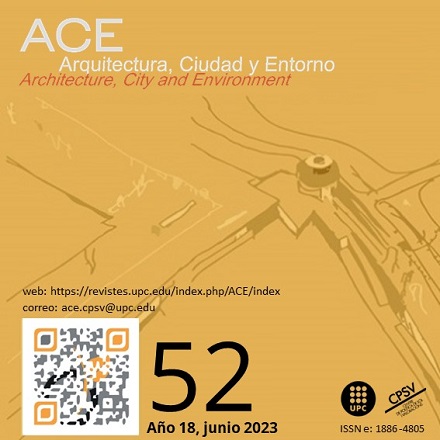Characteristics of the Commercial Passages and the Great Modern Galleries of Las Palmas de Gran Canaria: A Theoretical Review of the Collective Space
DOI:
https://doi.org/10.5821/ace.18.52.11926Keywords:
collective space, theory, shopping centres, Las Palmas de Gran CanariaAbstract
Collective space is an urban category that shows the complexity of the city by questioning the limits traditionally imposed by the ownership of a plot. These private spaces for public use extend the influence of the streets into the private plots, improving the permeability of the city and enriching the citizen experience. In this way they constitute an urban centrality in themselves according to their relationship with the public space and the uses of collective interest that they group. However, narrowing down its definition is still subject of academic debate, and the term is sometimes used loosely. For this reason, this work takes a historical tour to show the birth and evolution of the phenomenon from the industrial city, in addition to reviewing and comparing similar publications and research papers. Finally, with the purpose of adjusting the characteristics of the collective space stated in its definition, two commercial areas of Las Palmas de Gran Canaria city have been studied. The parameters used for this analysis are property, accessibility and programmatic complexity. This analysis is an example of how to understand its operation and influence within the urban fabric.
Downloads
Published
Issue
Section
License
| INTELECTUAL PROTECTION CRITERIA |
At this moment, it is count with the "Oficina Española de Patentes y Marcas", while global protection it is being processed by the World Intelectual Property Organization (OMPI/WIPO). Nevertheless the International Standard Serial Number Office (ISSN) has given the following numbers ISSN: 1886-4805 (electronic version) and 1887-7052 (paper version). All articles will be peer reviewed, using double blind reviewing. |
| COPYRIGHT |
The article contents and their comments are authors exclusive liability, and do not reflect necessarily the journal editor commitee's opinion. All ACE published works are subject to the following licence CC BY-NC-ND 3.0 ES http://creativecommons.org/licenses/by-nc-nd/3.0/es/ It implies that authors do not hold nor retain the copyright without restrictions but only those included in the licence. |


































